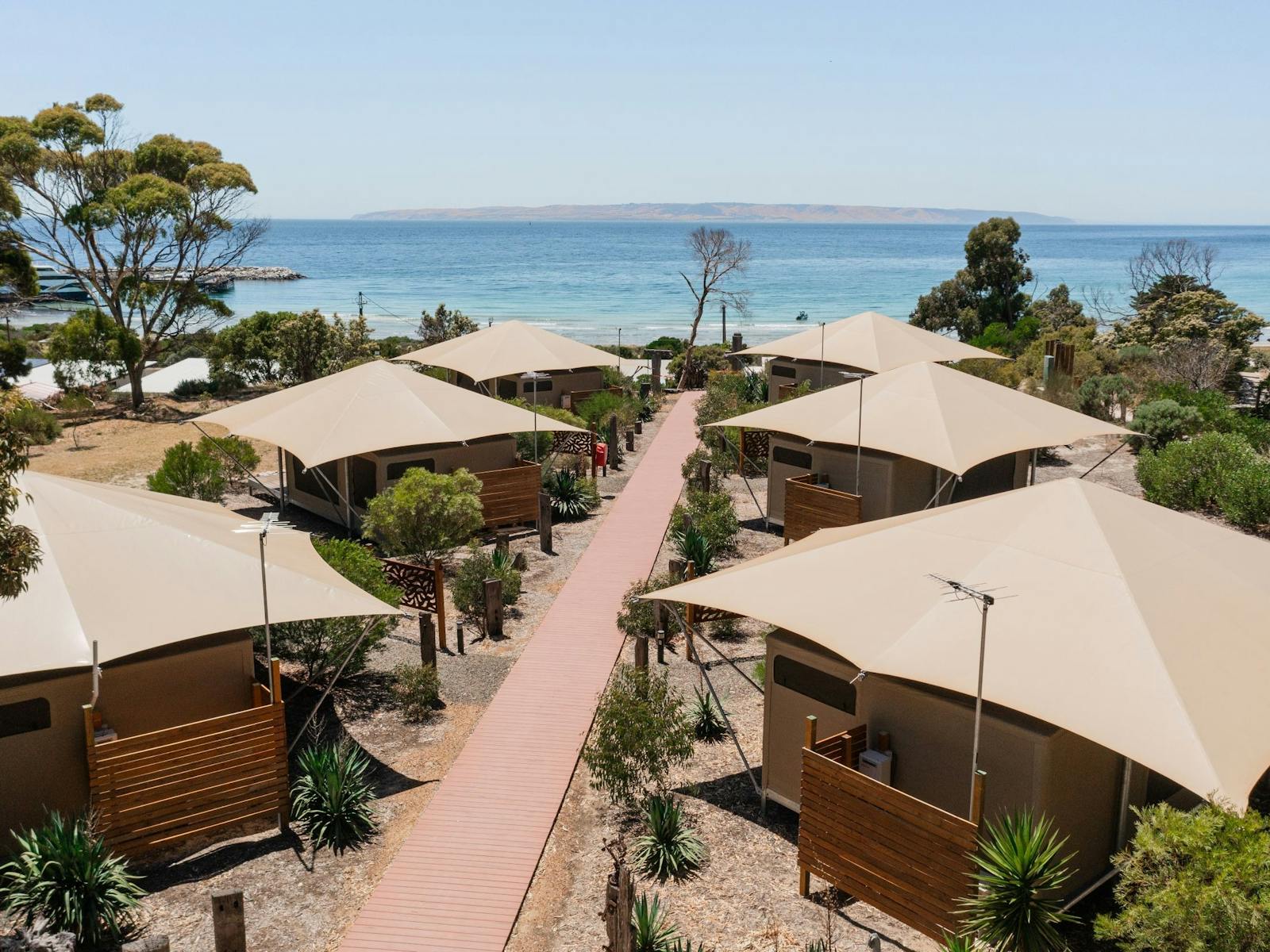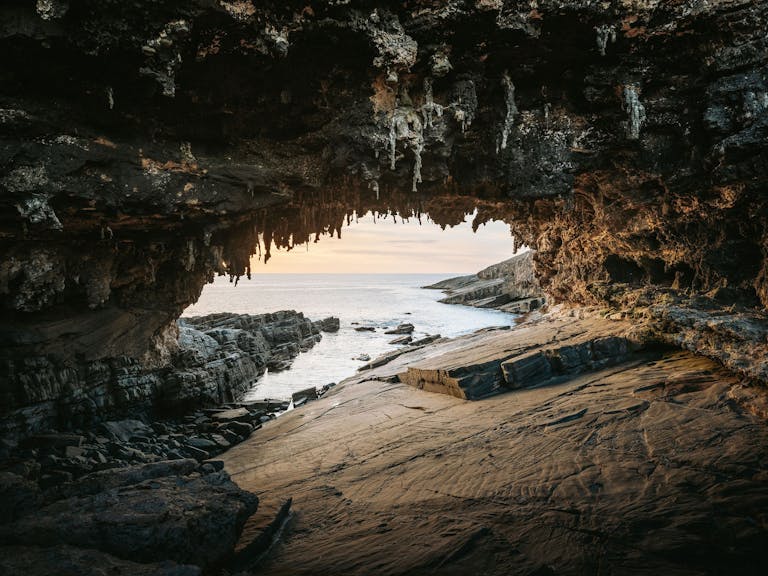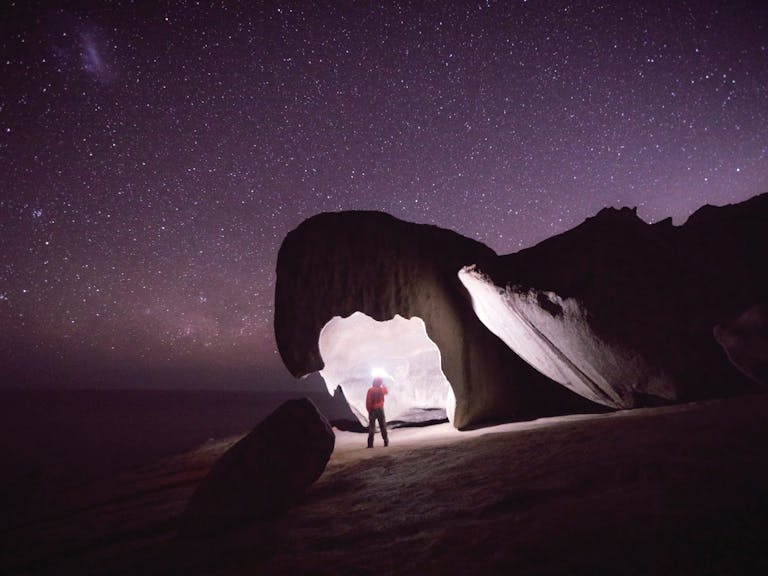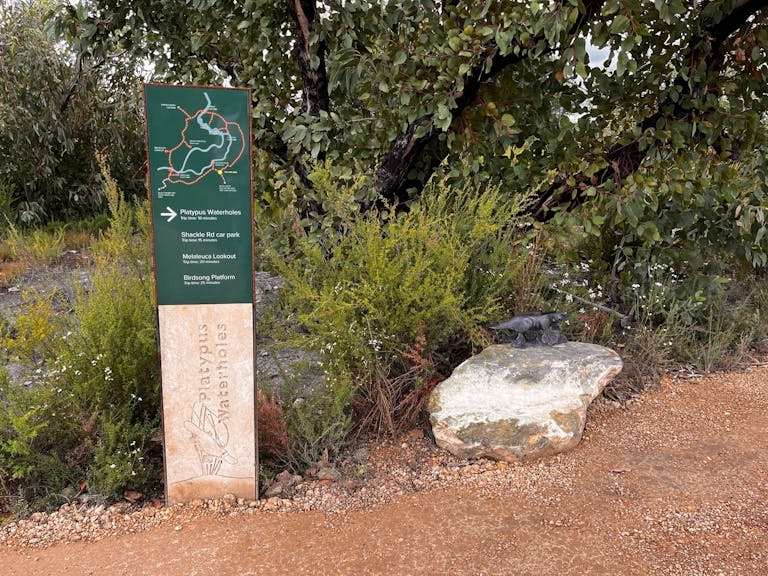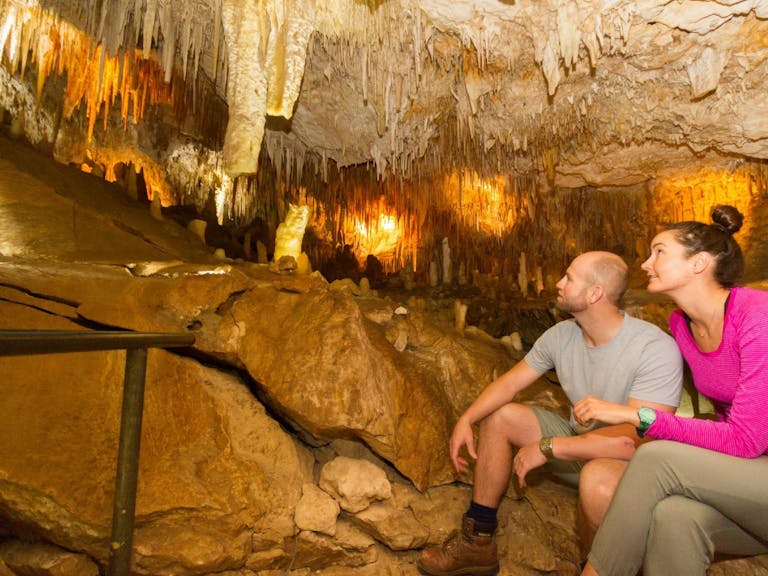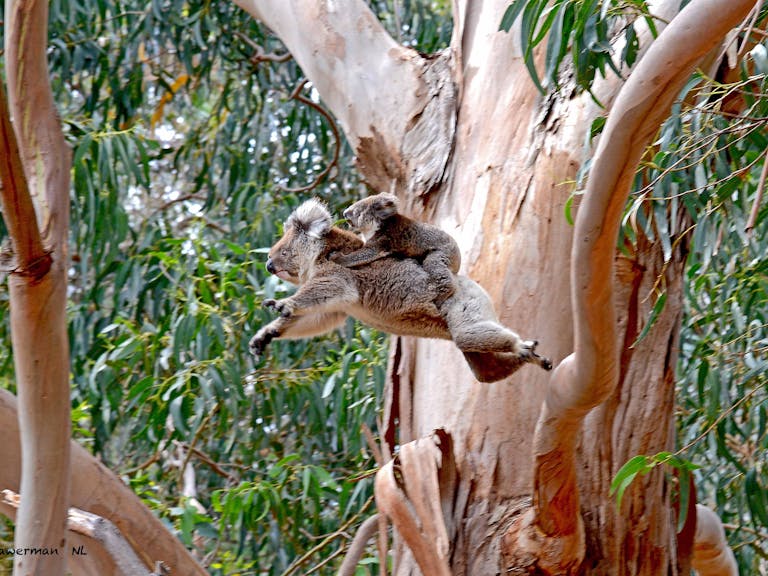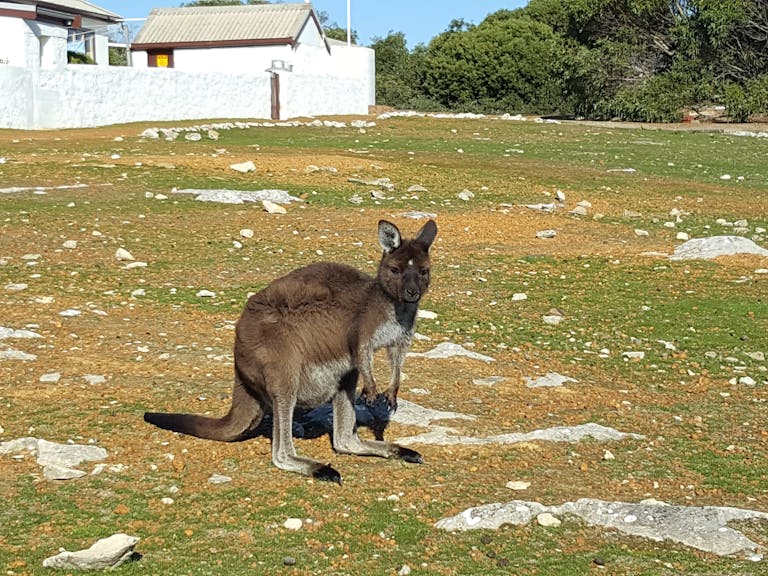Explore the rejuvenated Flinders Chase National Park, marvel at the iconic Remarkable Rocks and Admirals Arch, and witness the breathtaking coastal vistas.
-
1
Day one
Flinders Chase Visitor Centre
Flinders Chase Visitor Centre
Step into a world of natural wonders at the newly built Flinders Chase National Park Visitor Centre - the gateway to Flinders Chase National Park. With sustainable architecture and interactive exhibits, the centre enhances your understanding and appreciation of this unique environment. Opened in July 2024, it stands as a testament to resilience, community spirit, and sustainable tourism.
Admirals ArchAdmirals Arch is a natural rock arch created by amazing forces of nature. It's situated within Flinders Chase National Park on Kangaroo Island. You can access the boardwalk around the cliff face which leads to a viewing platform overlooking the arch. The arch is sculpted by weathering and erosion from the sea over thousands of years.
To reach the arch there is a purpose-built boardwalk, it’s steep with steps at the end that take you to see the arch itself. If you can’t make it down to the arch, the scenery along the way is still well worth a journey along the boardwalk.
Fur-seals often play among the rocks. These dark brown seals feed at sea but return to land to rest and breed. In summer, each of the large males establishes a territory with a number of females. You can often see Fur-seal pups playing near the rock pools beneath the arch.
There is an interpretive centre at the park with more information, maps and ideas for walking and viewing wildlife nearby.
You can also stay nearby in the heritage lighthouse cottages at Cape de Couedic. These have been beautifully restored with modern facilities.Cape du Couedic LighthouseCape du Couedic Lighthouse is included with your Flinders Chase entry permit or Kangaroo Island Tour Pass. (please note there is no access inside)
The lighthouse which was constructed between 1906–1909, consists of a tower built from 2,000 pieces of local stone, together with three four-roomed cottages to house the head keeper and two assistants with their families. The light characteristic shows two flashes every ten seconds, emitted at a focal plane height of 103 metres (338 feet). A Fresnel lens made by Chance Brothers is used there.
For many of its early years the site was inaccessible by land. Stores, materials and equipment brought by boat to Weirs Cove and were hauled up to the lighthouse by a flying fox winching system originally powered by a pair of horses.
Today the lighthouse is automated.Remarkable RocksPerched above the sea in Flinders Chase National Park, the impressive Remarkable Rocks form what appear to be a cluster of precariously balanced granite boulders.
This stunning work of nature has been shaped by the erosive forces of wind, sea spray and rain over some 500 million years. The golden orange lichen covering some of the rocks offers visitors wonderful photo opportunities at different times of the day. Interpretation signs share the story of how these intriguing rocks were formed.
There is a viewing platform providing a vantage point for disabled access. The area also provides an excellent vantage point for viewing the photogenic Casuarina Islets.Platypus Waterholes Walk - Flinders Chase National ParkFlinders Chase National Park is a must for any Kangaroo Island parks adventure. This vast area of wilderness features the iconic Remarkable Rocks, Admirals Arch and a long-nosed fur seal colony.
After being devastated by the January 3, 2020 firestorm, the 4.5-kilometer walking track along the Black Swamp and Rocky River has been rebuilt, allowing visitors to explore the habitat where the island's platypus reside.
Access: This walk begins at Flinders Chase Visitor Centre. -
2
Day two
Kangaroo Island Bush Getaway AdventuresDiscover the charm of Kangaroo Island with an unforgettable quad bike adventure through stunning farmland and bushland. Ride across creeks, try your hand at catching freshwater lobsters, round up sheep, and learn about the unique landscape. Along the way, spot incredible wildlife like koalas, kangaroos, echidnas, goannas, and more!
With over 15 years of experience, Kangaroo Island Bush Getaway offers professional training and friendly, personalized service. Whether you’re a beginner or an experienced rider, their automatic, easy-to-ride quad bikes ensure a smooth and enjoyable experience for all.
Book now for an adventure packed with fun, nature, and local knowledge!Kelly Hill CavesReady to step back in time? Kelly Hill Caves has reopened with a brand-new visitor experience.
An audio-visual tour featuring narration and a dynamic light display will provide visitors with an immersive experience through the history of the caves.
The experience starts with a guided above-ground walk. Here, you learn about the caves’ history and view new interpretive signage, setting the stage for the underground adventure.
Visited before? The tour offers fresh insights for both new and returning visitors.
About Kelly Hill Caves
Around two million years ago the sea was constantly changing between its present level and 125 metres lower, intermittently exposing the continental shelf. It was at this time that the dunes of Kelly Hill were formed as calcareous shell fragments from the exposed sea bed were windblown and deposited on the island’s south and west coast. Over a long period of time these dunes hardened into a porous limestone that is shaped by the action of percolating rainwater.
At Kelly Hill this has given rise to an underground labyrinth of sinkholes and caverns thought to extend for kilometres. Nature has again created some of its finest work here, with caves full of beautiful yet fragile stalagmites, stalactites, helictites and towering columns that transport visitors to another world.Hanson Bay Wildlife SanctuaryWelcome to Hanson Bay Wildlife Sanctuary, a privately-owned conservancy focused on providing habitat for native animals to live in the wild. The 5000 acre Hanson Bay Wildlife Sanctuary is situated on the western end of Kangaroo Island, between the Kelly Hill Caves Conservation Park and the Flinders Chase National Park. It is bordered by over 100,000 acres of protected wilderness lands and the Great Southern Ocean.
Hanson Bay Wildlife Sanctuary is pleased to offer you self-contained cabins with truly spectacular wilderness views of the beautiful turquoise waters of Hanson Bay.
They also offer guided nocturnal tours and guided daytime walks of the Sanctuary so you can experience Australian native marsupials up "close and personal".
The Koala Walk is open every day (except Christmas) and is recognised as the best place on Kangaroo Island to see a sustainable population of Koalas in the wild.
The Sanctuary is also a bird watchers paradise - with resident Blue Wrens, Lorikeets, Crimson Rosellas, Black Cockatoos, Bush Stone-Curlews, Crescent Honey-eaters, and Cape Barren Geese.
They are for pre-booked guided tours only. Tours run most days at 10.30 am, 2.30 pm and sunset. See website for details. Please call or text for last-minute availability.Cape Borda LighthouseCape Borda Lighthouse is perched on cliffs overlooking Investigator Strait. Located on the north western corner of Kangaroo Island, this unique square lighthouse was built in 1858 and is steeped in European history.
The lightstation was established to guide ships entering the dangerous waters of Investigator Strait from the west. During colonisation, the South Australian settlement was almost entirely dependent on the shipping trade.
Take a self-guided tour around the Cape Borda Lightstation settlement. It will give you an insight into the early lightkeepers’ living conditions, and how isolation and a demanding routine dominated their often harsh lives.
After the self-guided tour, enjoy a stroll along one of the walking trails around the park including the Cliff Top Hike. This short trail through a picturesque rock garden takes you to a stone lookout that provides an ideal vantage point for spotting whales and dolphins. -
That's a wrap
From witnessing the playful fur seals at Admirals Arch to soaking in the coastal vista views from Weirs Cove, you were immersed in the untamed beauty of the West End. The rugged landscapes, diverse wildlife encounters, and breathtaking vistas are sure to created moments of awe and serenity.








